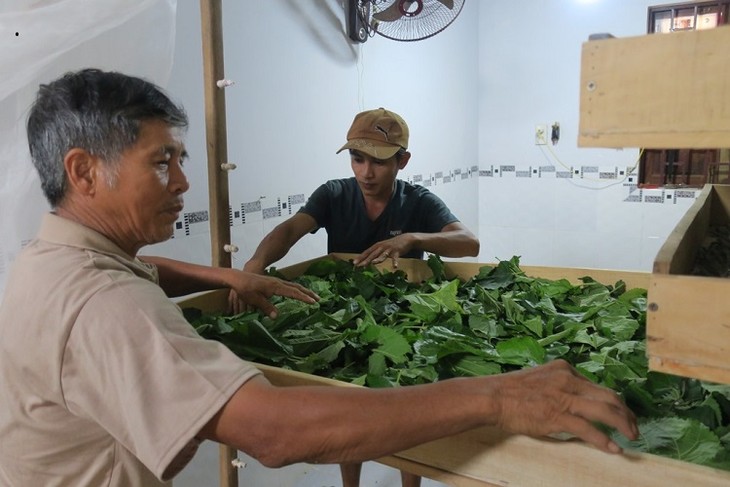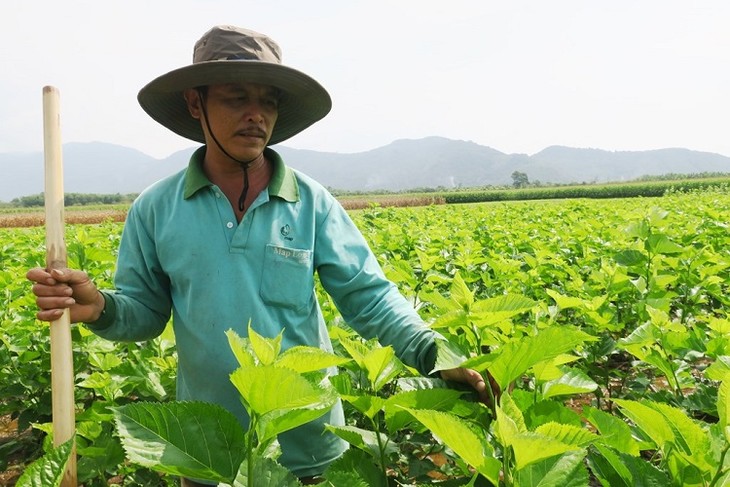(VOVWORLD) - The mountain district of Duc Linh in Binh Thuan province is encouraging local farmers to grow mulberries and raise silkworms using new techniques and seedlings. Their profitability is three times that of traditional crops.

Each year, Ho Doan Hung’s family earns 5,200 USD in net profit from one hectare of mulberries after deducting labor and seed costs. (Photo: Viet Quoc/VOV)
|
Ho Doan Hung is one of the farmers in Sung Nhon commune, Binh Thuan province, who have changed their crop structure.
After a fact-finding tour of a mulberry growing area in Bao Loc in the central highlands province of Lam Dong last April, Hung decided to convert his farm land to growing mulberries and raising silkworms.
After 4 months of growing a new mulberry seedling called F7, Hung’s family began to buy silkworms for breeding. Hung said after just one year, he sees the model’s obvious profitability.
“One third of a hectare of mulberries on average turns out 5 farrows of silkworms. Each farrow has 4 boxes of silkworms. A cocoon harvest earns 8,600 USD. One hectare of mulberries generates 5,200 USD in net profit after deducting labor and seed costs,” Hung added.

Phan Ngoc Ut a farmer in Sung Nhon commune. (Photo: Viet Quoc/VOV)
|
Phan Ngoc Ut, a farmer in Sung Nhon commune, has converted his 4,000-square-meter farm to growing mulberries. He recently piloted his first seedling box. In 13 days, the silkworms produced nearly 45 kilos of cocoons of high quality, which are sold at 8 USD per kilo. His family made more than 340 USD.
Ut said he plans to expand his cultivation area, adding: “In the past, we grew corn and then beans on the land. I have started planting mulberries over the past few months. At first, I grew on a small scale. Now I think I’ll add several thousand square meters.”
Truong Quang Den, head of the Agriculture Section of Duc Linh district, said the district used to be a key area for growing mulberries and had a mulberry cooperative. Because the cultivation was ineffective, the cooperative was dissolved in the 1990s.
Duc Linh has encouraged farmers in Sung Nhon commune to lead the development of a crop restructuring model and then expand it across the district. Linking with enterprises and stabilizing farmers’ output are key issues.
Den said: “In addition to increasing the cultivation land, we will develop a chain of distributors to buy the farmers’ output. The agricultural sector has mobilized businesses and farmers to participate in the value chain.”
So far, 16 households in Sung Nhon commune are engaged in growing mulberries on an area of 10 hectares. Recently the price of silk cocoons has stabilized between 6 and 8 USD per kilo.